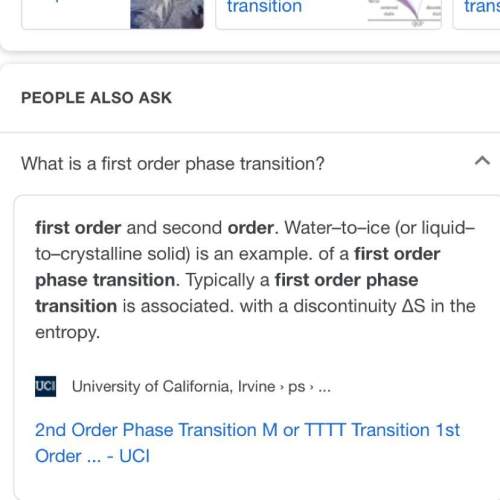
Physics, 08.03.2021 22:20 khanhlan7213
You are given 6 identical resistors, and allowed to combine them in any possible configuration to produce different equivalent resistances. What is the ratio of the largest possible equivalent resistance, R eq, max , that you can make to the smallest possible equivalent resistance, R eq, min , that you can make with these resistors?

Answers: 2
Another question on Physics

Physics, 22.06.2019 08:00
Aheat engine running backward is called a refrigerator if its purpose is to extract heat from a cold reservoir. the same engine running backward is called a heat pump if its purpose is to exhaust warm air into the hot reservoir. heat pumps are widely used for home heating. you can think of a heat pump as a refrigerator that is cooling the already cold outdoors and, with its exhaust heat qh, warming the indoors. perhaps this seems a little silly, but consider the following. electricity can be directly used to heat a home by passing an electric current through a heating coil. this is a direct, 100% conversion of work to heat. that is, 19.0 \rm kw of electric power (generated by doing work at the rate 19.0 kj/s at the power plant) produces heat energy inside the home at a rate of 19.0 kj/s. suppose that the neighbor's home has a heat pump with a coefficient of performance of 4.00, a realistic value. note: with a refrigerator, "what you get" is heat removed. but with a heat pump, "what you get" is heat delivered. so the coefficient of performance of a heat pump is k=qh/win. an average price for electricity is about 40 mj per dollar. a furnace or heat pump will run typically 200 hours per month during the winter. what does one month's heating cost in the home with a 16.0 kw electric heater? what does one month's heating cost in the home of a neighbor who uses a heat pump to provide the same amount of heating?
Answers: 2

Physics, 22.06.2019 12:00
In a set amount of time, a battery supplies 25j of energy to an electric circuit that includes two different loads. one of the loads produces 10 j of heat energy during this time interval. how much heat energy is produced by the second load in this time? explain your answer
Answers: 3

Physics, 22.06.2019 15:00
Astudent throws a water balloon with speed v0 from a height h = 1.76 m at an angle θ = 21° above the horizontal toward a target on the ground. the target is located a horizontal distance d = 9.5 m from the student’s feet. assume that the balloon moves without air resistance. use a cartesian coordinate system with the origin at the balloon's initial position. (a) what is the position vector, rtarge t, that originates from the balloon's original position and terminates at the target? put this in terms of h and d, and represent it as a vector using i and j. (b) in terms of the variables in the problem, determine the time, t, after the launch it takes the balloon to reach the target. your answer should not include h. (c) create an expression for the balloon's vertical position as a function of time, y(t), in terms of t, vo, g, and θ. (d) determine the magnitude of the balloon's initial velocity, v0, in meters per second, by eliminating t from the previous two expressions.
Answers: 3

Physics, 22.06.2019 22:50
When a pair of 10-n forces act on a box of candy, the net force on the box is a 20 n. b about 14 n. c zero. d any of the above depending on the directions of forces.
Answers: 1
You know the right answer?
You are given 6 identical resistors, and allowed to combine them in any possible configuration to pr...
Questions

Mathematics, 19.05.2021 17:10



English, 19.05.2021 17:10

Advanced Placement (AP), 19.05.2021 17:10

History, 19.05.2021 17:10

Mathematics, 19.05.2021 17:10


Social Studies, 19.05.2021 17:10

English, 19.05.2021 17:10




History, 19.05.2021 17:10



Mathematics, 19.05.2021 17:10

Mathematics, 19.05.2021 17:10


History, 19.05.2021 17:10




